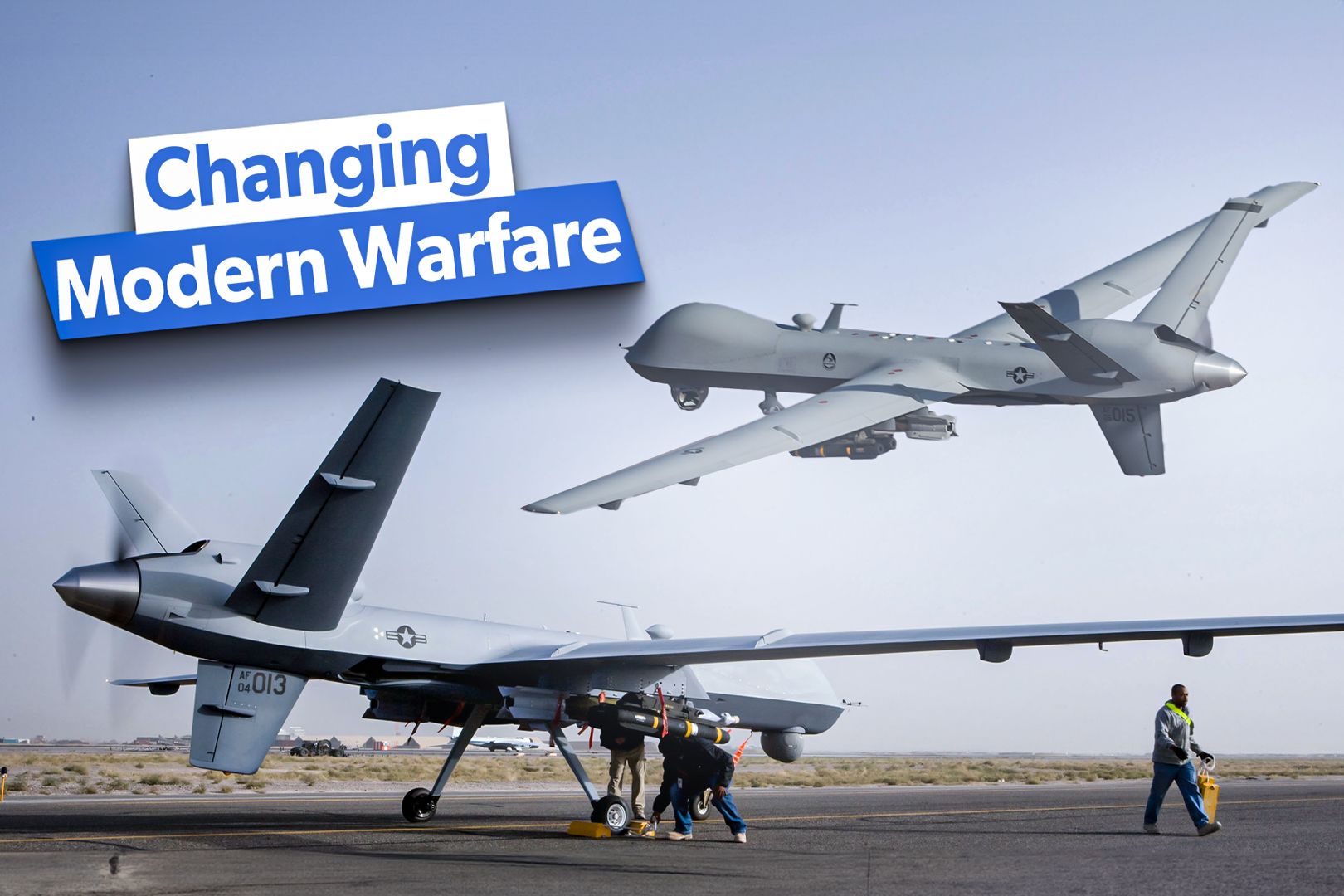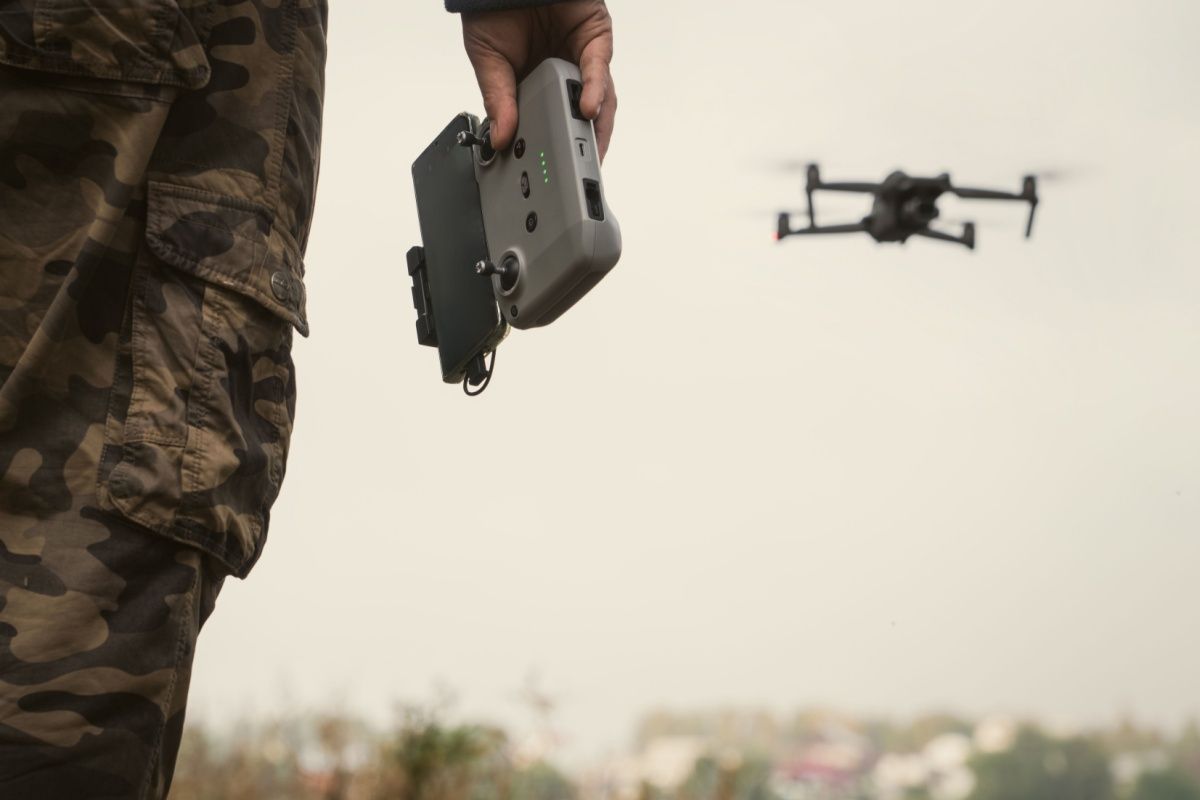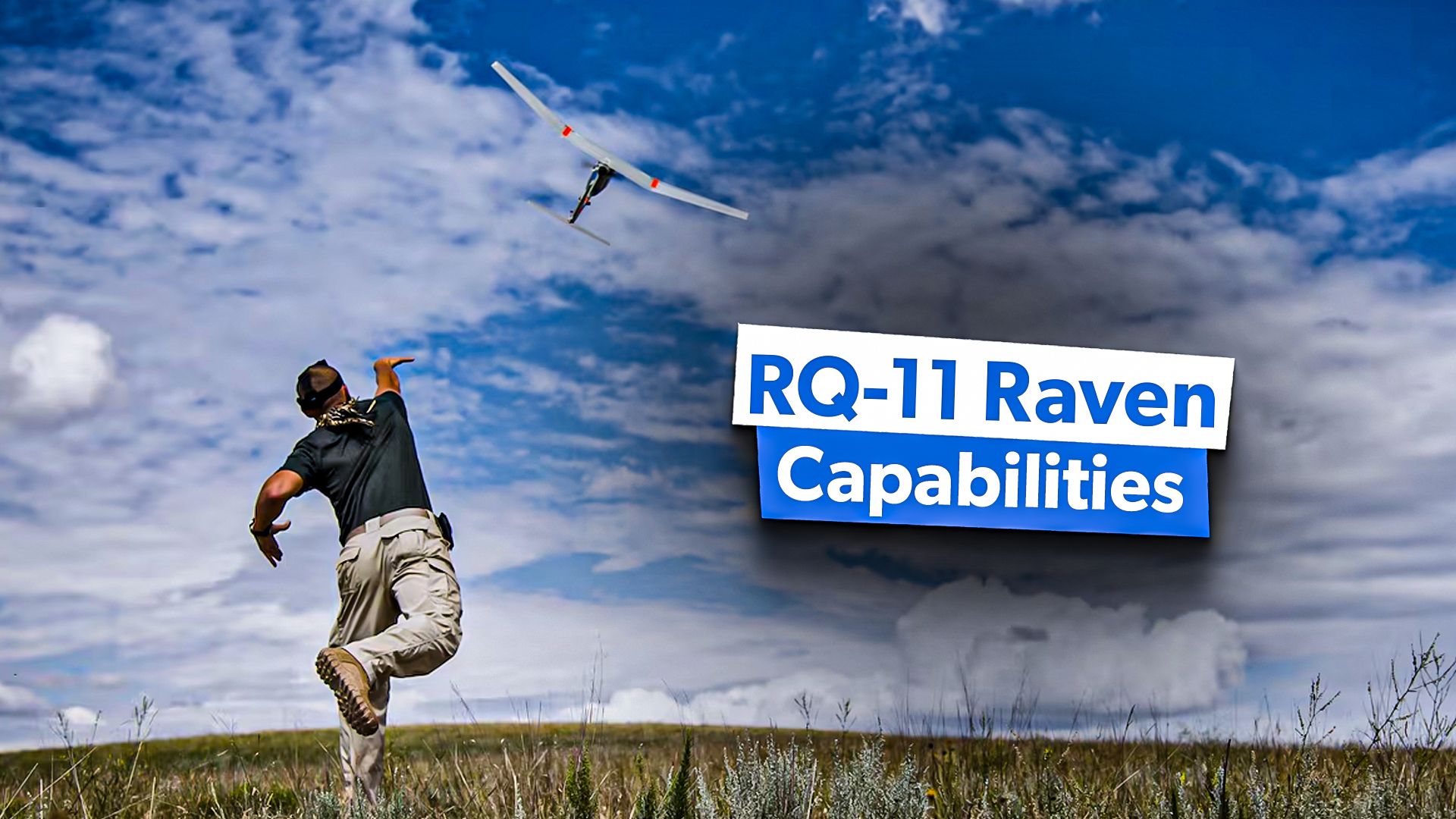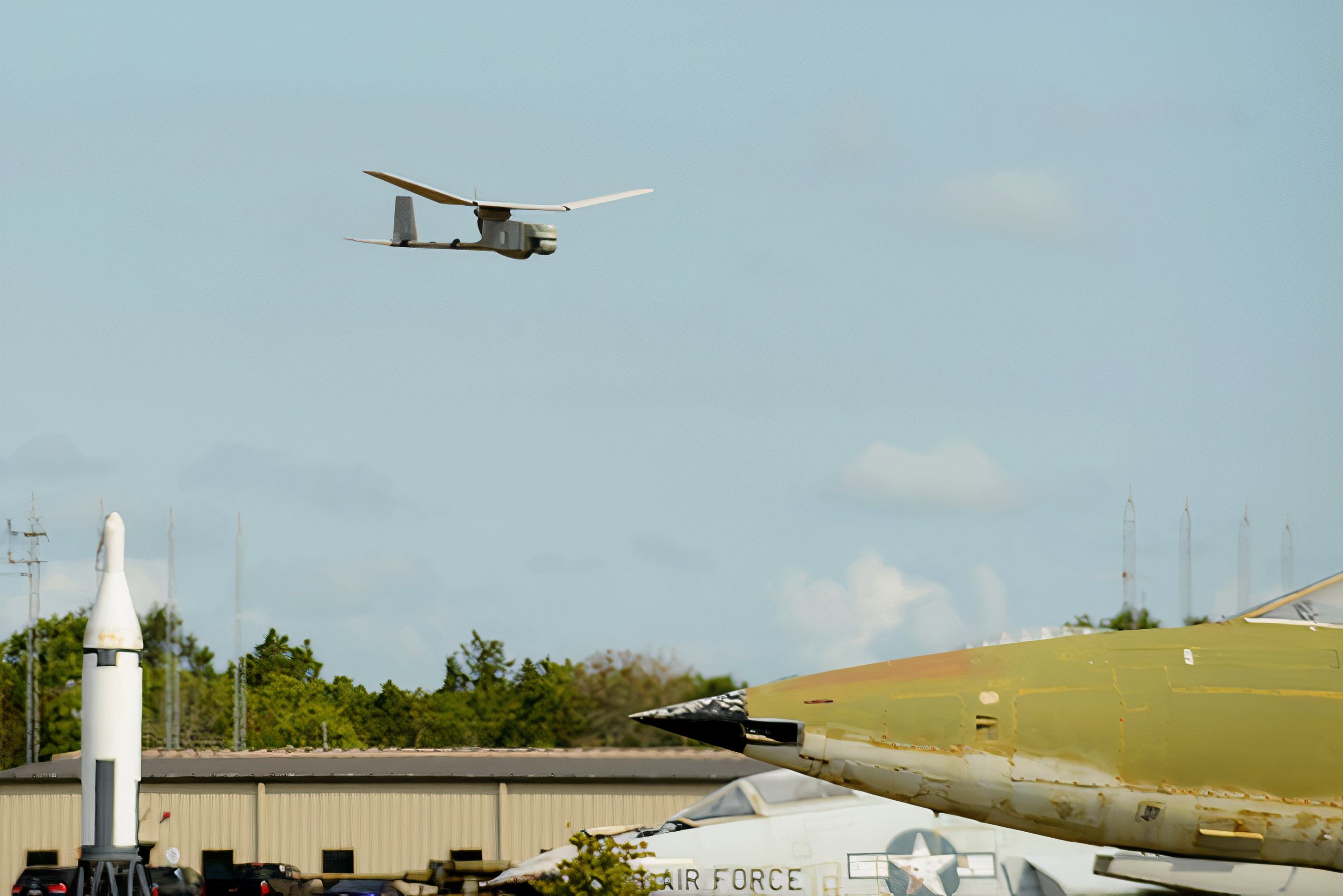Summary
- The RQ-11 Raven is a small SUAV with a 90-minute flight time.
- AeroVironment makes UAVs for surveillance dating back to World War I.
- UAVs have evolved to relay target coordinates, improving battlefield tactics.
The AeroVironment RQ-11 Raven is a small, hand-launched, remote-controlled Small Unmanned Aerial Vehicle (SUAV) designed to provide the United States military with real-time direct intelligence, surveillance, reconnaissance, and target information. Weighing less than five pounds and able to remain airborne for as long as 90 minutes, the RQ-11 Raven features a Mantis i23 gimbaled EO/IR camera with an IR illuminator and digital stabilization.
Photo: US Army
In the mid-2000s, the United States Army held a competition for a small unmanned aerial vehicle (SUAV). The Army was looking for something that could easily be carried onto the field and provide troops with real-time, up-to-date, and over-the-horizon views. To understand what tasks the small SUAV would need to be able to perform, the United States Army (USA) purchased four AeroVironment FQM-151 Pointer UAVs.
About the AeroVironment FQM-151 Pointer
Resembling a hobbyist remote-controlled sailplane, the AeroVironment FQM-151 Pointer was constructed of high-impact Kevlar and powered by a 2.5hp electric motor with a pusher propeller. Founded in 1971, and headquartered in Arlington, Virginia, AeroVironment is the brainchild of American aeronautical designer Paul B. MacCready Jr.
MacCready Jr. rose to fame in 1977 after his Gossamer Condor won the Kremer prize for human-powered flight along a one-mile figure-eight course set out by the British Royal Aeronautical Society. While completing the task, the Gossamer Condor stayed aloft for seven minutes.
Wanting to push the boundaries further, British industrialist Henry Kremer offered £100,000 ($129,000) for the first human-powered aircraft to fly across the English Channel. MacCready Jr. was up for the challenge and began work designing and building what would become the Gossamer Albatross. Configured in a similar way to the Wright brothers’ successful Wright Flyer, the Gossamer Albatross successfully flew from Folkstone, England, to Cape Gris-Nez in France on June 12, 1979.
Photo: USAF
After his success with human-powered flight, MacCready Jr. turned his attention to UAVs, with the AeroVironment FQM-151 Pointer making its maiden flight in 1988. While still in service with the United States military, the US Army wanted a similar UAV but smaller.
About the AeroVironment RQ-11 Raven
After winning the United States Army’s 2005 competition for a small hand-launched UAV, the Raven RQ-11B went into total production before being selected for use by the United States Marine Corps and the United States Air Force. Over the coming years, the Raven RQ-11B has continuously evolved and can now fly completely autonomous missions using GPS waypoint navigation.
Photo: US Army
Weighing around 4.2 lbs, the RQ-11B Raven has a flight endurance of 60 to 90 minutes and an effective operational radius of around 6.2 miles. It is assembled in the field in separate pieces and stored in what resembles a backpack. Once ready for flight, it is linked to a laptop before being powered up and hand-launched. After completing its mission, the RQ-11B Raven lands itself by autopiloting to a pre-defined landing point.
In the summer of 2015, the RQ-11B Raven’s directionally pointing camera was replaced with a 360-degree rotating gimbal, negating the need for its operator to maneuver the UAV for surveillance. The new camera also has two modes: one for use during the day and an infrared mode for nighttime flying.
Specifications and general characteristics of the AeroVironment RQ-11 Raven
|
Length |
3 feet |
|
Wingspan |
4.5 feet |
|
Weight |
4.8 lbs with gimbal |
|
Powerplant |
1 x direct drive Aveox 27/26/7-AV electric motor |
|
Cruise Speed |
26 mph |
|
Range |
6.2 miles |
|
Endurance |
60–90 minutes |
|
Operational Altitude |
150–1,000 feet |
|
Payload |
Gimbaled EO/IR and fixed EO or IR payload |
Unmanned Aerial Vehicles (UAVs) are changing how wars are fought
The idea of using Unmanned Aerial Vehicles (UAVs) for intelligence gathering dates back to the First World War. In 2017, the British tested a small radio-controlled aircraft called the “Aerial Target.” The Americans had their own UAV called the “Kettering Bug.” Despite promising results, the war ended before they could be used.
In the mid-1930s, the British developed several radio-controlled UAVs for use as gunnery targets. One of these was a radio-controlled Tiger Moth called the “DH.82B Queen Bee.” From this, we call UAVs “Drones.”

Related
Top 5 Military Drones Changing Modern Warfare
For better or worse, military drones are here to stay. Simple Flying examines the five that are proving most impactful.
The idea of using UAVs for aerial reconnaissance surfaced again during the Vietnam War (1955-1975). During the Vietnam War, UAVs were also used as decoys and to drop leaflets. Since then, UAVs have become more sophisticated, incorporating the latest technology for missions where troops cannot be safely deployed.
UAVs and the war in Ukraine
Since Russia invaded Ukraine in 2022, UAVs have been used on an unprecedented scale, with hundreds of them not only being used to track enemy forces but also to guide artillery and deliver bombs. Every day, Ukrainian Army drone units post videos of UAVs attacking and destroying Russian military vehicles and artillery pieces.
UAVs developed for civilian use, like the Chinese DJI Mavic quadcopter, are ideal for surveillance and can be used effectively by soldiers in the field to get the lay of the land. Besides using UAVs on the front line units
further back, we use winged UAVs to fly well into enemy territory. When they spot a target, they relay the coordinates to field commanders, who then use the information to deliver ordinance on the target.
Soldiers in the field fear the whining noise that UAVs make as it signals that the enemy knows where they are and can begin shelling them at any time.
UAVs are not only being used on the battlefield in Ukraine but also to target Russian oil facilities hundreds of miles inside Russia. It is not only the Ukrainians who are successfully using UAVs, with Russia purchasing hundreds of Shahed drones from Iran. More like a flying bomb than anything else, Russia has used the Shahed drones to attack the civilian population in Ukrainian cities.
As the war approaches its third year, we expect to see UAVs used more during the conflict.

Related
How An Ad-Hoc Group Of 80 Ukrainian Drone Operators Defended Kyiv Using WhatsApp
The Russian 6th Tank Regiment was defeated on its drive to Kyiv thanks in part to civilians operating their hobby drones.




